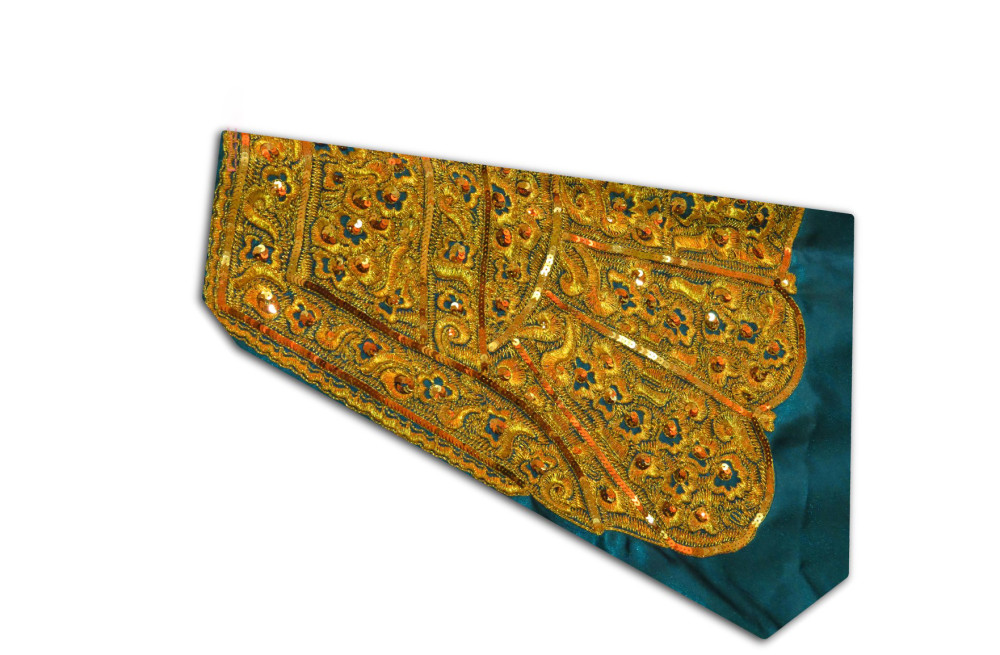
Kam Duzi of Hormozgan
Kam Duzi, Kameh Duzi and Kaman Duzi are the names of a kind of embroidery. This handicraft does not have a coherent history, but from the Safavid dynasty till now it has been popular amongst the sewing of Hormozgan province. In the past this craft was used to decorate scarves, collars, edges of skirts, Bandari or local trousers of the south, “Kondureh” or a kind of women dress, handcuffs and sleeves in most of the cities. The necessary materials of Kam Duzi are big round sequins with holes, small golden and rarely silver sequins, Golabatoon yarns, needle, hooks, a big wooden loop that looks like a sieve, velvet, blue or black broadcloth and satin. The loop is called “Kaman” and in local dialect is called “Kam”. To make a Kam Duzi, a fabric is tightly stretched on the loop. Then it is tightly tied with a rope which makes it look like the instrument “Daf”. The difference is that instead of animal skin, fabric is stretched on the loop.
After the fabric got fixed, they are painted on, and later it is detached from the loop. Sometimes the painting itself is cut and used separately or it is sewed to trousers, bags and etc. The Golabatoon designs can be very versatile. They are copied to the fabrics by carbon papers, either from predesigned patterns or drawn on the fabric from the memory of its creator based on the taste of the buyer. The method is to sew the golden or silver sequins by Golabatoon threads and attach them around a big golden sequin. In the terminology of embroidery, Kam Duzi is a kind of sewing in which shiny sequins are sewed by Golabatoon threads to a bigger sequin. The small sequins cover the bigger one and create designs of flower. They are repeated next to each other and make a strip. The creators of Kam Duzi products are mainly young girls and women of Hormozgan province. It can be said that in cities of Bndar Lengeh, Minab and most rural cities very few families can be found in which the girls and women are not familiar with Golabatoon.